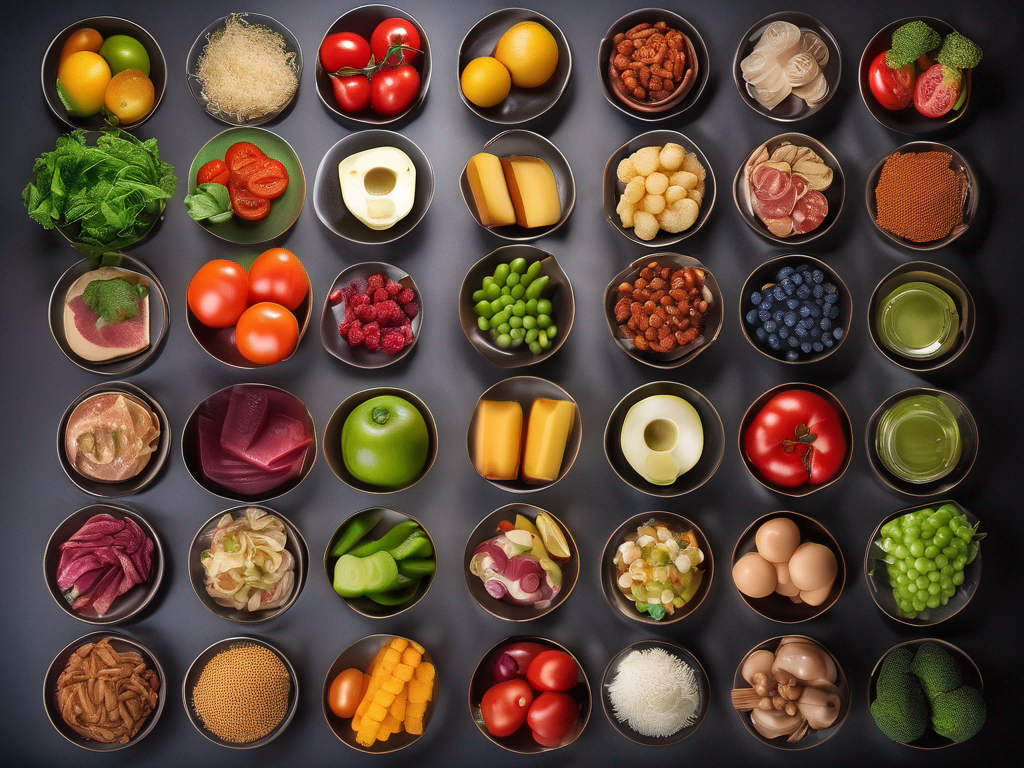
How to Store Parsnips for Maximum Freshness
Get Your Free Food Safety Cheat Sheet
30 most common foods with instant answers. Print it and stick it on your fridge—completely free!
How to Store Parsnips for Maximum Freshness
Parsnips are a delicious and versatile root vegetable that can add a unique flavor to a variety of dishes. To ensure that your parsnips stay fresh and flavorful for as long as possible, it's important to store them properly. In this blog post, we'll discuss the best ways to store parsnips to maximize their freshness and shelf life.
Understanding Parsnips
Before we dive into storage methods, let's take a closer look at parsnips. These root vegetables are rich in nutrients like fiber, vitamin C, and potassium. They have a sweet and earthy flavor that pairs well with various herbs and spices. When selecting parsnips for storage, choose ones that are firm, smooth, and free from blemishes.
Why Proper Storage is Important
Proper storage is essential for maintaining the quality and freshness of parsnips. Storing them incorrectly can lead to spoilage, loss of flavor, and a shorter shelf life. By following the right storage methods, you can enjoy your parsnips for weeks to come.
Best Ways to Store Parsnips
When it comes to storing parsnips, there are a few key factors to consider, including temperature, humidity, and airflow. Here are some effective methods for storing parsnips to keep them fresh:
1. Store in the Refrigerator
- Trim the Tops: Before storing parsnips in the refrigerator, trim off the leafy tops, as they can draw moisture away from the roots.
- Wrap in Paper Towels: Wrap the parsnips in paper towels to absorb excess moisture and prevent them from becoming soggy.
- Place in a Bag: Place the wrapped parsnips in a perforated plastic bag or a vegetable crisper drawer in the refrigerator.
2. Store in a Root Cellar
- Ideal Conditions: Root cellars provide the perfect environment for storing root vegetables like parsnips, with cool temperatures and high humidity.
- Store in Sand: Place the parsnips in a box filled with damp sand or sawdust to keep them moist and fresh.
- Check Regularly: Check the parsnips regularly for any signs of spoilage and remove any that are starting to go bad.
3. Freeze for Long-Term Storage
- Blanching: To freeze parsnips for long-term storage, blanch them in boiling water for a few minutes, then plunge them into ice water to stop the cooking process.
- Packaging: Pack the blanched parsnips in airtight containers or freezer bags, removing as much air as possible before sealing.
- Label and Date: Don't forget to label the containers with the date of freezing to keep track of their freshness.
4. Pickling
- Pickling Solution: Pickling parsnips is a great way to preserve their freshness and add a tangy flavor. Prepare a pickling solution using vinegar, water, sugar, and spices.
- Sterilize Jars: Sterilize jars by boiling them in water before filling them with the pickling solution and parsnips.
- Refrigerate or Can: Store pickled parsnips in the refrigerator for short-term use or can them for longer shelf life.
Safety Tips for Storing Parsnips
When storing parsnips, it's important to keep food safety in mind to prevent contamination and spoilage. Here are some safety tips to ensure that your parsnips stay fresh and safe to eat:
- Wash Your Hands: Always wash your hands before handling parsnips to prevent the transfer of bacteria.
- Check for Spoilage: Regularly inspect stored parsnips for signs of mold, rot, or unusual odors, and discard any that show signs of spoilage.
- Separate from Raw Meats: Store parsnips away from raw meats and other potential sources of contamination to prevent cross-contamination.
- Use Clean Containers: When freezing or pickling parsnips, make sure to use clean and sanitized containers to avoid bacterial growth.
Conclusion
Proper storage is key to maintaining the freshness and quality of parsnips. Whether you choose to store them in the refrigerator, root cellar, freezer, or by pickling, following the right methods will help extend their shelf life. By understanding the best ways to store parsnips and following safety guidelines, you can enjoy these nutritious root vegetables in your meals for an extended period.
Remember, fresh parsnips not only taste better but also provide more nutrients for your body. So, next time you buy some parsnips, use these storage tips to keep them fresh and delicious for as long as possible. Happy cooking!
Remember, the key to delicious parsnip dishes is fresh parsnips, so make sure to store them properly using the tips mentioned above.
As a food safety expert, I prioritize providing accurate and relevant information to help individuals make informed decisions about their food storage practices. If you have any specific questions or concerns about storing parsnips or any other food items, feel free to reach out.
Authoritative Food Safety References
These agencies and university labs inform every tip and health precaution we publish.
USDA FoodKeeper – Cold Storage Guidelines
Official refrigerator, freezer, and pantry timelines maintained by the U.S. Department of Agriculture.
Visit USDA FoodKeeperFDA Produce Safety Rule & Grower Guidance
Field-to-fridge handling practices that prevent contamination of fruits, vegetables, and leafy greens.
Visit FDA Produce SafetyCDC Foodborne Illness Prevention Hub
Surveillance-backed guidance on pathogens, symptoms, and steps to reduce foodborne illness risk.
Visit CDC Food SafetyUC Davis Postharvest Technology Center
University research detailing optimal storage atmospheres for produce after harvest.
Visit UC Davis PostharvestPenn State Extension – Home Food Preservation & Safety
Peer-reviewed extension bulletins on safe canning, chilling, and reheating practices.
Visit Penn State ExtensionGet Your Free Food Safety Cheat Sheet
30 most common foods with instant answers. Print it and stick it on your fridge—completely free! Want more? Upgrade to the complete guide with 70+ foods.
Scan your food directly and get instant safety info using our AI-powered camera feature.